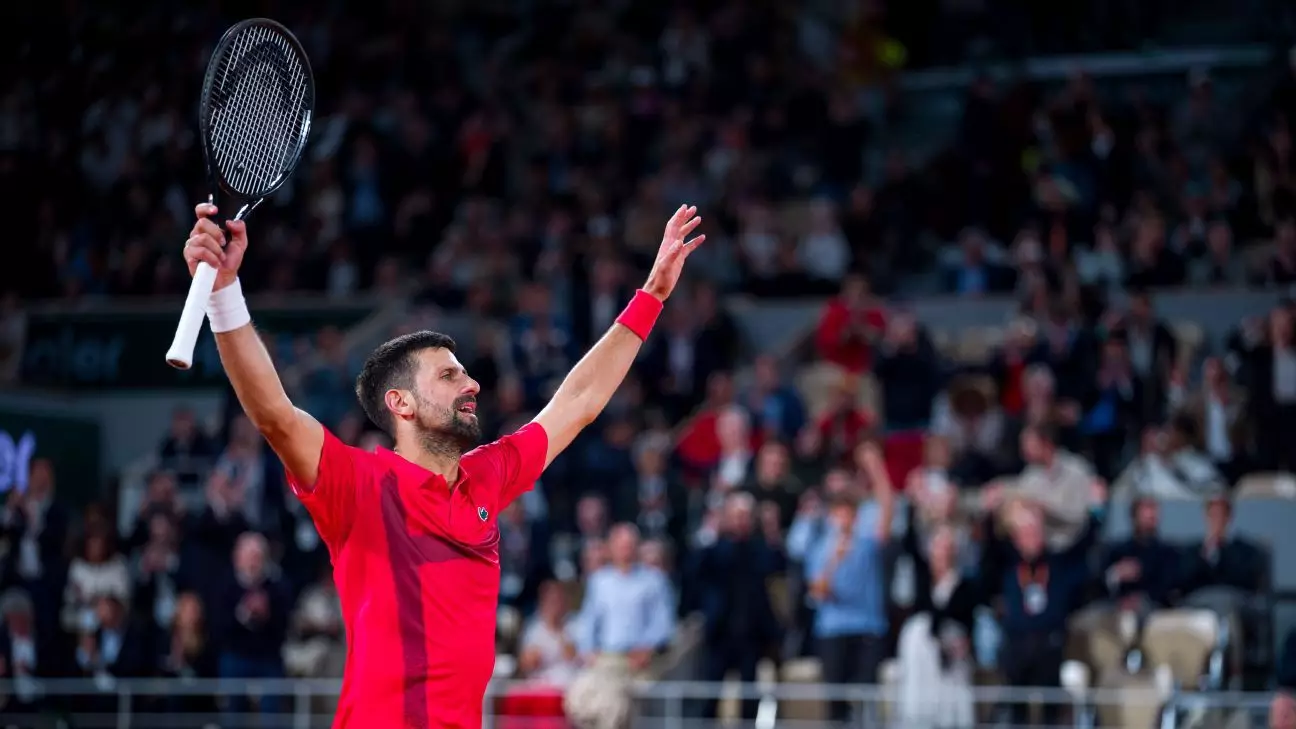As Novak Djokovic strides into the spotlight of the French Open semifinals, many may still question whether the 38-year-old Serbian can claim another major title. Despite recently claiming his monumental 100th career title in Geneva, skepticism surrounded his capability at Roland Garros. However, his stunning quarterfinal victory over Alexander Zverev not only silenced critics momentarily but also reignited discussions about the legacy of a player who seems to defy aging. Surpassing expectations, Djokovic showcased the kind of resilience that has become a hallmark of his illustrious career.
A Match Defined by Strategy and Skill
In a contest that displayed Djokovic’s tactical brilliance, the Serbian found himself initially unsteady, surrendering his opening service game. Yet, this early setback catalyzed a shift in momentum. Adapting his approach, Djokovic changed rackets and recalibrated, ultimately dictating the flow of the match in a masterful display. What stood out was his ability to recover; after dropping the first set, he returned to the court with renewed focus, unraveling Zverev’s game plan and turning the tide in a methodical fashion.
Interestingly, Djokovic’s service statistics illustrate his gradual supremacy. Starting with only 52% of first serves in play, he astutely rectified his game plan, culminating in a striking 78% in the third set. Though Zverev initially maintained a solid lead, the palpable shift in momentum emphasized the resilience Djokovic is renowned for. The match highlighted not only his physical prowess but also his mental acuity, transforming adversity into opportunity.
Mastery in Application of Techniques
Djokovic’s strategic selections, particularly with his drop shot, became more pronounced as the match progressed. The 35 drop shots throughout the encounter fostered an uncertainty in Zverev, forcing him into difficult positions and prompting his eventual unraveling. This play not only showcased Djokovic’s flair for variety but also his intellectual approach to manipulating his opponent’s rhythm. Zverev, who thrives in baseline exchanges, found himself outmatched by Djokovic’s innovative adaptations, emphasizing the importance of situational awareness in high-stakes matches.
Through each set, Djokovic’s increasingly aggressive placements and tactical use of slice shots disrupted Zverev’s tempo. By blending offensive play with deft defensive maneuvers, Djokovic exemplified why he continues to be a force even at this late stage in his career. The fourth set saw Djokovic remain unyielding, maintaining his level of concentration while Zverev struggled to find his footing.
Future Challenges Amidst Triumphant Resurgence
As Djokovic prepares to face world No. 1 Jannik Sinner in the semifinals, the path ahead is fraught with challenges. Undoubtedly, his trajectory through this tournament suggests a remarkable resilience; however, facing Sinner—who has bested Djokovic in their last three encounters—offers a unique test. The psychological edge clearly sits with Sinner, and interpreting Djokovic’s mental and physical state in this context will be crucial. Can Djokovic harness the weight of experience to counter Sinner’s youth and momentum?
Moreover, should Djokovic prevail against Sinner, an anticipated duel with Carlos Alcaraz looms, further complicating his pursuit of a record-setting 25th Grand Slam title. Historically, no player has defeated the top three ranked opponents in succession to claim a major championship, presenting Djokovic not just with a physical challenge but a monumental psychological one.
Djokovic’s career has been defined by his ability to rise to the occasion, often when critics least expect it. Whether he can conjure that magic once more, in what may be seen as one of the toughest pathways to a Grand Slam, remains a captivating prospect for tennis enthusiasts worldwide. His journey thus far is not just a testament to skill but an embodiment of tenacity and relentless pursuit of excellence—a narrative that resonates well beyond the boundaries of the sport.

